According to research, 48% of landing pages contain multiple offers, while only 16% have a single offer. This highlights the importance of having a clear and concise message on your landing page. Additionally, having strong and compelling headlines can increase conversion rates by up to 73%. Other elements such as clear call-to-action buttons, social proof, and mobile responsiveness are also key factors in creating a high-performing landing page and increasing your ROI. Let’s dive into the fundamental building blocks of success.
Elements of a landing page
The elements of a landing page may vary based on the objective of the page, type of landing page and so on. However, below are the seven most common and essential element that every landing page must have.
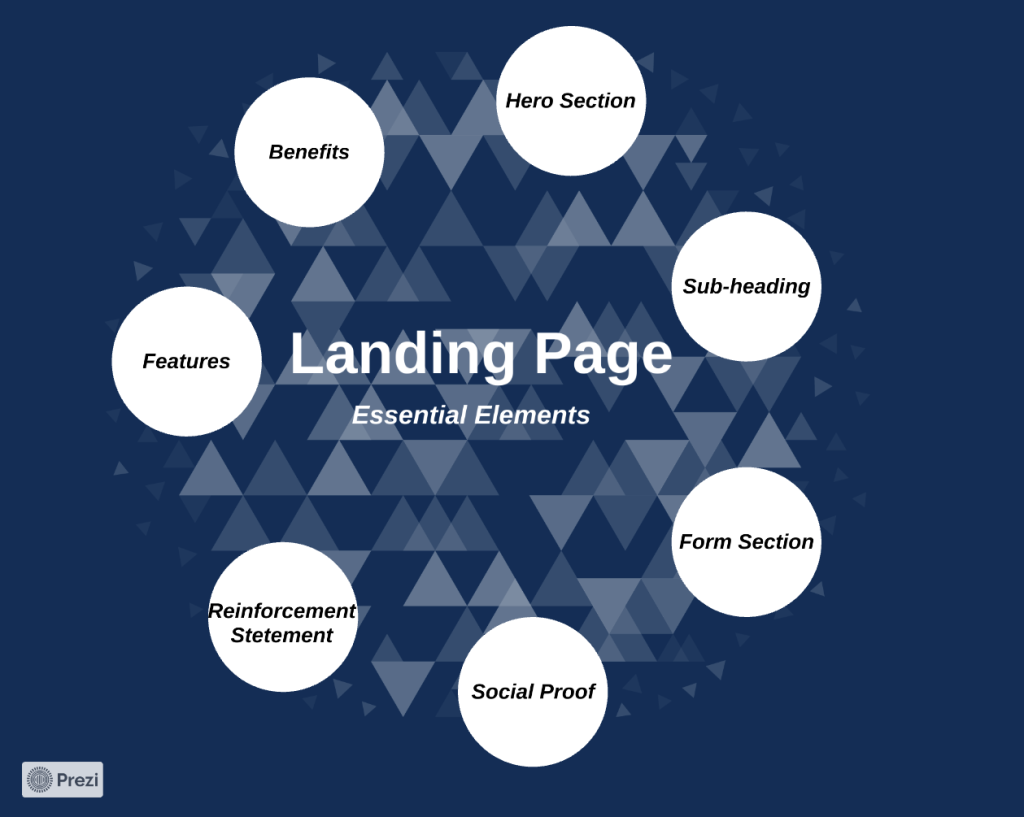
Hero Section
The hero section is the prominent, above-the-fold area of a landing page designed to capture visitors’ attention immediately. This is the first section of a landing page. Therefore, it has to be designed meticulously to keep viewers’ attention. The key objectives of a hero section are:
- Capture Attention
- Communicate Value Proposition
- Encourage Action
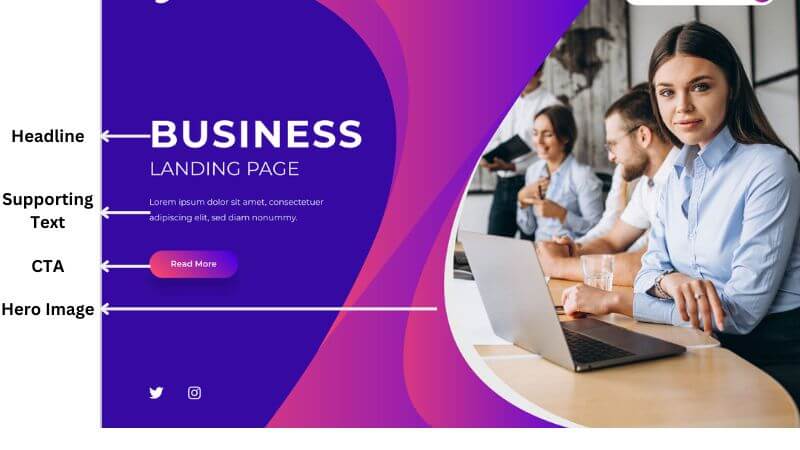
A hero section has multiple sub-sections. Below are a few of them which you must see in a landing page.
Headline & supporting text
Headline is the main, bold statement that appears first in the landing page and captures the visitor’s attention the most. Its objective is to quickly convey the core message or value proposition of the product.
Supporting texts are the additional text that follows the headline. It provides more details or context to the headline. Its objective is to clarify and expand on the headline to further engage the visitor.
Hero image or video
It is a prominent visual element in the hero section, either an image or video, that captures attention of the viewers. The objective of this section are many such as to complement the text in the hero section, create an emotional connection and visually reinforce the message of the landing page.
Call to action button
This element of the hero section encourages the visitors to take a specific action. Its objective is to guide the visitor towards the desired next step, such as signing up or making a purchase.
Subheading & supporting text
Subheading is a secondary statement placed below the hero section. It provides additional context or detail about the value proposition. The objective of this lection is to support the headline by elaborating on the main message and further capturing the visitor’s interest.
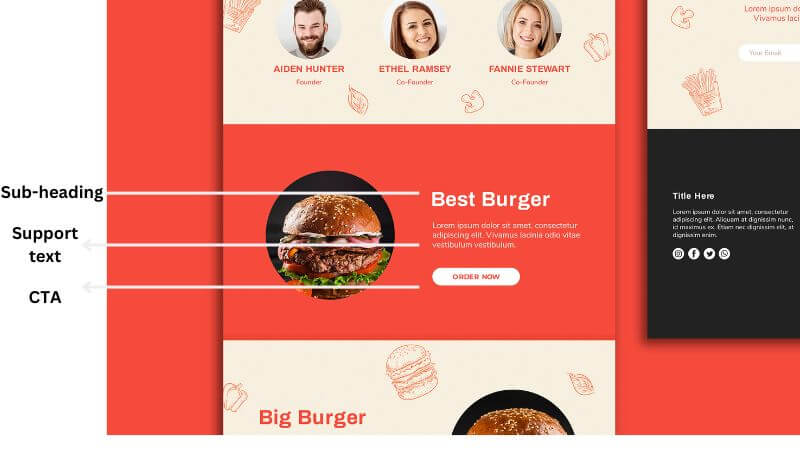
The subheading is followed by supporting texts that offers further explanation related to the subheadline.
A secondary call-to-action is linked to the subheading section. It encourages visitors to take a specific action related to the supporting message.
Landing page form section
A landing page form is a designated area where visitors can input their information. They exchange their information for something they value such as a free trial, newsletter subscription, or downloadable content. It serves as a crucial element for lead generation and data collection and principle section for majority landing pages.
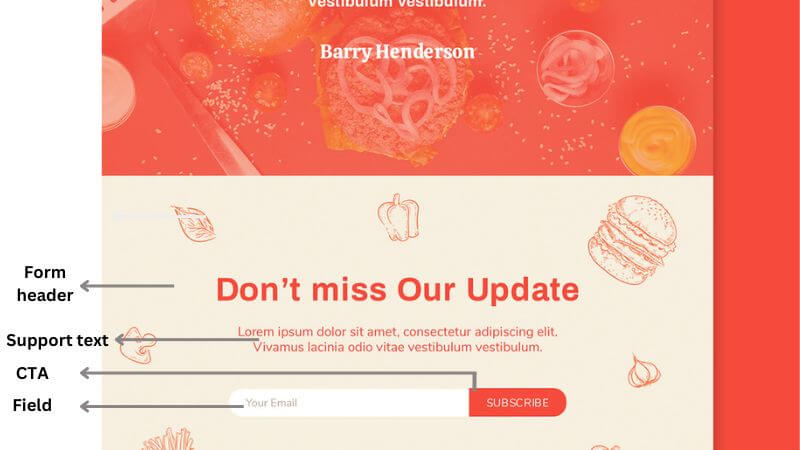
The prime objective of this section is to :
- Capture Visitor Information
- Facilitate Lead Generation
- Encourage conversion and sales
Form header & supporting text
The headline of the form is brief, attention-grabbing title for the section that communicates the purpose of the form perfectly. The objective of the headline is to encourage the visitors to fill the form out.
The supporting text of the form headline provides additional information and context of the form. The objective of the section is to offer clear guidance about the form and encourage visitors to complete the form.
Form fields
Form fields are input areas where visitors provide specific information, such as their name, email, or other details. The objective of this section is to collect necessary data from visitors to facilitate further engagement or transactions.
Call to action
This is a clear and compelling call-to-action button within the form section that prompts visitors to submit their information. Its objective is to encourage users to complete the form and take the desired action, such as signing up or requesting more information.
Social proof
Social proof is the section of the landing page showcasing testimonials, reviews, or endorsements from customers or industry experts. The objective of this section is to build trust and credibility by presenting the positive experiences of the users with the product or service.
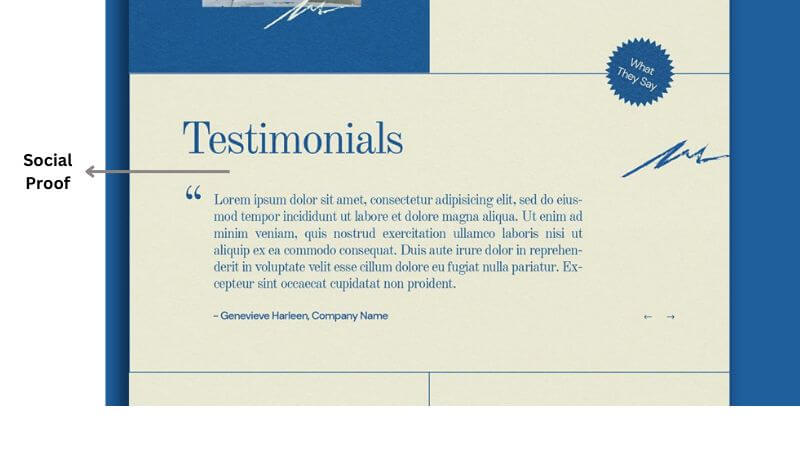
Reinforcement statement
The reinforcement statement is a concise message that emphasizes the benefits or value of the offering. It is often placed near the CTA and followed by the key benefit section. The objective of this section is to strengthen the visitor’s decision-making process by reiterating key points that encourage action.
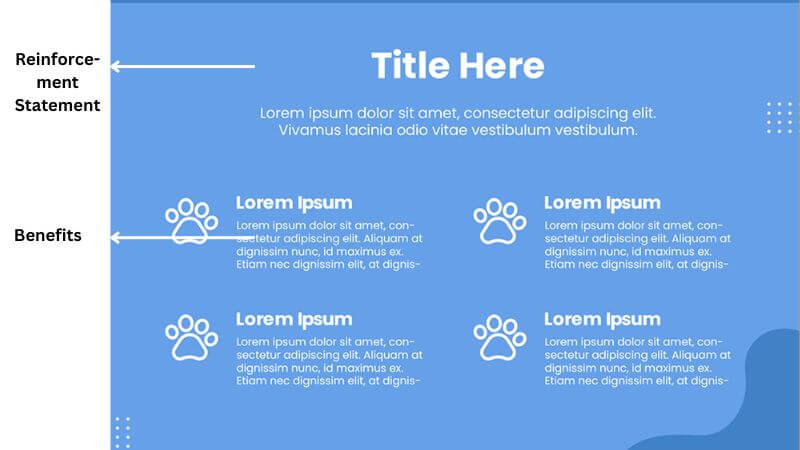
Benefits
This section of the landing page highlights the main advantages of the product or service. The objective of this section is to clearly communicate the value and benefits to help visitors understand why they should choose the offering.
Features
This is an area that outlines the specific functionalities or characteristics of the product or service. The objective of this section is to inform visitors about what the offering includes, its capabilities and relevance to their needs.
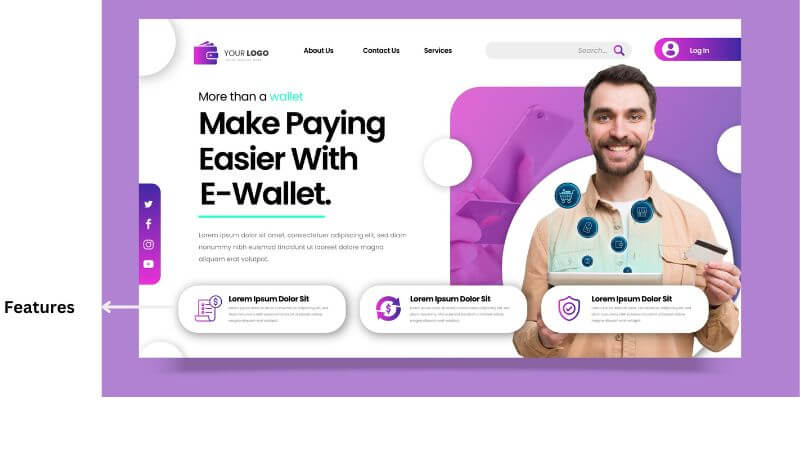
Do you need assistance designing your landing pages or service pages that drive sales? Hire the best website design specialist in Bangladesh today at an affordable price.
